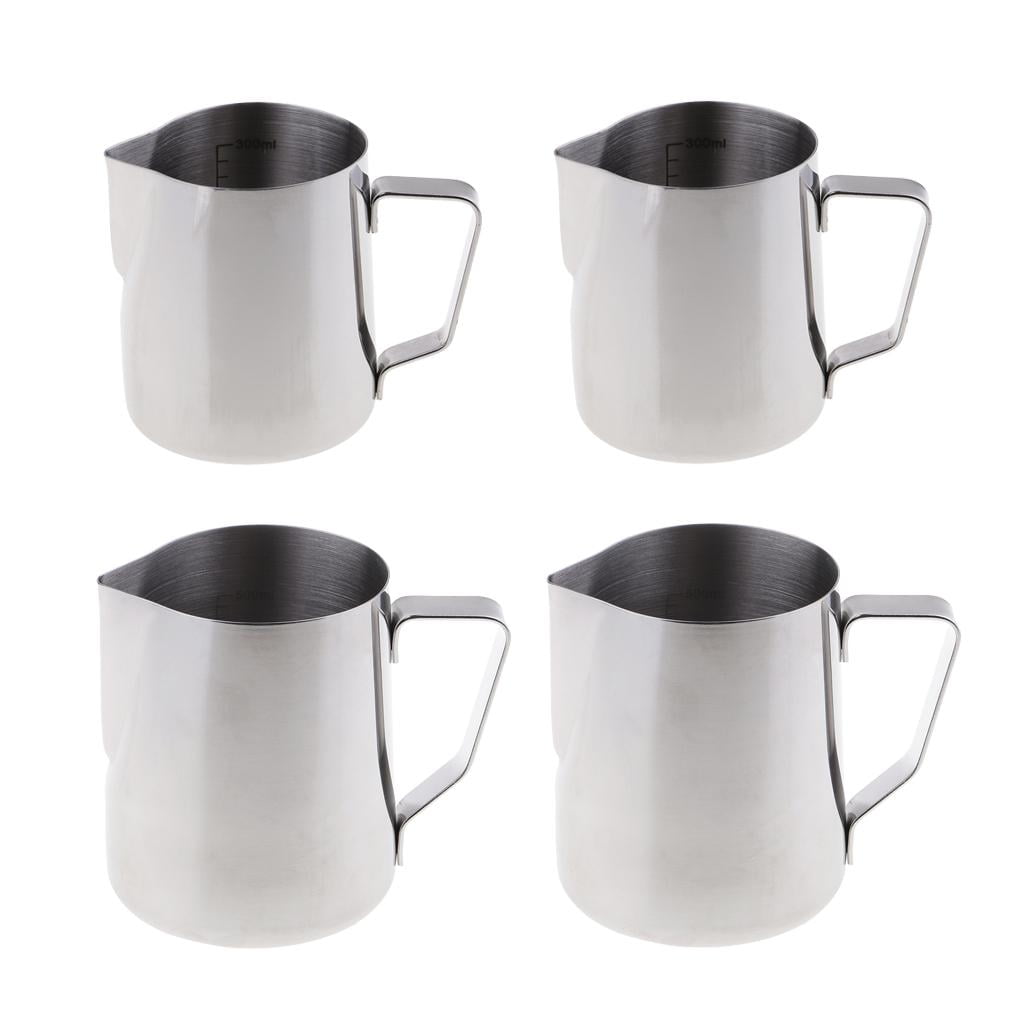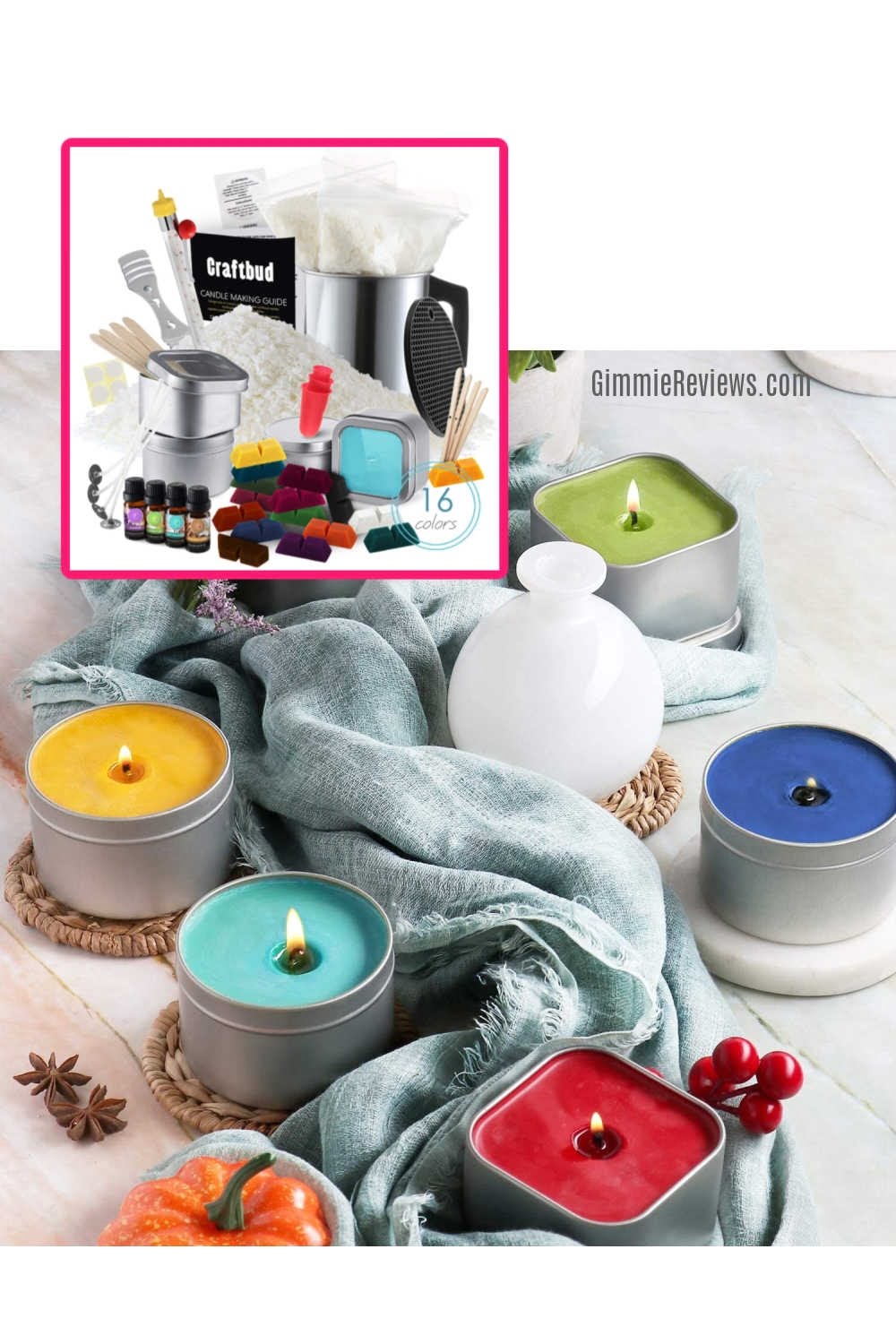Candle making businesses have seen a surge in popularity in recent years, with handmade candles becoming highly sought after by consumers. The captivating combination of aromatic scents, beautiful designs, and the charm of handcrafted products has elevated candles to more than just a source of light – they have become an art form. But beyond their aesthetic appeal, candle making businesses also hold great potential for financial success.
In this article, we will delve into the world of candle making businesses and explore the allure and profitability behind them. We will begin by understanding the rising popularity and demand for handmade candles, as well as highlighting the potential for financial success within this industry. From there, we will move on to discussing the importance of proper planning as the foundation for starting your own successful candle making business.
Proper planning is essential when it comes to setting up any business venture, and candle making is no exception. In the second section, we will emphasize the significance of thorough research and creating a comprehensive business plan. This includes identifying key factors to consider such as target audience and market analysis. Only through careful planning can you lay down a strong foundation for your candle making business.
So if you’ve ever dreamt of turning your passion for candles into a profitable enterprise, join us on this journey as we explore the ins and outs of setting up a successful candle making business. Delving into topics such as initial investment, estimating overhead costs, pricing strategies, cost-saving measures, financial goal-setting, and more, we will provide you with all the necessary knowledge to embark on your own candle making adventure.
Get ready to immerse yourself in this captivating world where beauty meets profitability.
Importance of Proper Planning
Starting a candle making business can be an exciting and rewarding venture, but it requires careful planning and preparation to ensure success. Proper planning is the foundation of any business, and it is crucial for setting up a candle making business. This section will emphasize the significance of thorough research and creating a comprehensive business plan as key steps in establishing your candle making business.
The Significance of Thorough Research
Before diving into the world of candle making, it is essential to conduct thorough research to gain an understanding of the industry, market trends, and competitors. Researching consumer preferences and current market demand for handmade candles will help you identify an appropriate target audience and niche for your business. Furthermore, understanding popular candle scents, designs, and packaging styles can give you a competitive edge in the market.
Crafting a Comprehensive Business Plan
Once you have conducted extensive research, the next step is creating a detailed business plan. A well-crafted business plan will serve as your roadmap to success by outlining your goals, strategies, and financial projections. Your plan should include aspects such as branding strategies, marketing options, pricing models, production processes, and distribution channels. It is also important to consider factors like startup costs, production timelines, and potential challenges you may encounter along the way.
Key Factors to Consider
When developing your business plan, consider several key factors that can influence the success of your candle making business. Conducting a market analysis will help you understand consumer spending patterns and preferences in different demographics. Additionally, identifying your target audience will enable you to tailor your products specifically to their needs and interests.
Another crucial aspect is evaluating competition within the industry. Determine what sets your handmade candles apart from others in terms of quality or unique features that could make them attractive to consumers.
By investing time in proper planning through thorough research and crafting a comprehensive business plan, you are setting a solid foundation for your candle making business. This will help guide you through the process and increase the likelihood of success as you move forward with your candle making journey.
Initial Investment
Starting a candle making business requires careful planning and an understanding of the initial investment needed. Determining the cost of setting up a candle making business is crucial in order to establish a strong foundation for success. In this section, we will delve into the various expenses involved in starting a candle making business, breaking down startup costs and discussing the necessary equipment, materials, and permits.
The Startup Costs
The first step in determining the cost of starting a candle making business is to carefully evaluate all the necessary startup costs. This includes identifying and purchasing essential equipment such as melting pots, molds, wicks, and thermometers. Additionally, considering expenses for sourcing high-quality materials like wax, fragrance oils, dyes or colorants, and packaging materials are vital. It is important to set aside a budget for these supplies as they are essential for producing candles.
Licensing and Permits
Another important aspect of setting up a candle making business is obtaining the necessary licensing and permits. These requirements vary depending on your location, so it’s essential to research the specific regulations in your area. Some common licenses may include general business licenses, sales tax permits, or zoning permits if you plan on operating from home or opening a brick-and-mortar store. The costs associated with obtaining these licenses should also be considered when determining your initial investment.
Additional Considerations
In addition to equipment and permits, there are other key expenses to consider when calculating the cost of setting up a candle making business. Some of these include branding materials such as labels or packaging designs that can help make your candles stand out in the market. Additionally, marketing costs like website development or advertising campaigns should also be accounted for in your budget.
It is important to conduct thorough research on all these aspects while formulating your business plan to have clarity on how much you need to invest upfront. Understanding these initial investment costs will help you make informed decisions and set realistic financial goals for your candle making business.
Estimating Overhead and Operating Costs
Starting a candle making business involves more than just the initial investment in equipment and materials. To sustain your business, it is crucial to estimate and manage overhead and operating costs effectively. These recurring expenses can have a significant impact on your profit margins and long-term success. Here are some key factors to consider when estimating overhead and operating costs for your candle making business:
- Rent: If you plan to operate a physical storefront or workshop, rent will be one of your major expenses. Research the rental market in your area to determine the average cost of commercial spaces that meet your needs. Consider factors such as location, size, accessibility, and amenities while assessing different rental options.
- Utilities: Electric power, water, and other utility bills are another regular expense for your business. Calculate an estimate based on the anticipated energy consumption of running candle-making equipment, lighting, heating/cooling systems, etc. If possible, invest in energy-efficient appliances or practices to reduce utility costs.
- Insurance: Protecting your candle making business from unforeseen events or accidents is essential. Explore different types of insurance coverage that would be beneficial for your specific operation, such as general liability insurance or product liability insurance. Obtain quotes from multiple insurance providers to find the most competitive rates.
- Packaging and branding: Packaging plays an important role in product presentation and customer experience. Consider the cost of packaging materials such as jars, boxes, labels, ribbons, and any custom branding elements you want to incorporate. Budgeting for attractive packaging can help enhance the perceived value of your candles.
- Marketing: A key aspect of growing your candle making business is effective marketing strategies to reach potential customers. Allocate funds for various marketing activities such as online advertising campaigns, social media promotions, print materials like brochures or flyers, attending trade shows or craft fairs, and creating a professional website.
To maximize profitability without compromising quality or customer experience:
- Consider bulk purchasing of raw materials and supplies to take advantage of discounts or wholesale prices.
- Implement efficient inventory management practices to minimize waste, spoilage, or overstocking.
- Repurpose leftover wax or used candle containers creatively to avoid unnecessary expenses.
By estimating and managing these overhead and operating costs effectively, you can ensure that your candle making business remains sustainable and profitable in the long run. Bear in mind that it is important to regularly review and adjust your budget as necessary, as economic conditions and market trends may impact costs over time.
Pricing Your Products
One of the most crucial aspects of running a successful candle making business is determining the right price for your products. Setting prices that are both profitable and competitive can be a challenging task, but it plays a significant role in the overall success and sustainability of your business. In this section, we will offer insights into pricing strategies for handmade candles and explore different pricing models that you can implement.
When it comes to pricing your handmade candles, there are several factors to consider. First and foremost, you need to factor in your production costs, which include the cost of materials, labor, and overhead expenses. Additionally, you should also account for any indirect costs such as packaging, branding, marketing, and administrative expenses. It’s important to calculate these costs accurately to ensure that you are not selling your products at a loss.
One popular pricing approach is the cost-plus method. This involves adding a markup on top of your total production costs to determine the selling price. For example, if your total production costs for a batch of candles amount to $10 and you decide on a 50% markup, you would sell each candle for $15 ($10 x 1.5). This method guarantees that all of your costs are covered while also allowing for profit.
Another commonly used pricing model is market-based pricing. This involves researching and analyzing the prices of similar candles in the market and setting your prices accordingly. By knowing what competitors are charging for similar products, you can position yourself competitively within the market while still maintaining profitability.
Ultimately, finding the sweet spot between profitability and competitiveness requires careful consideration of various factors and regular monitoring of market trends. It may be necessary to adjust your prices periodically based on changes in production costs or market demands. The key is to strike a balance that allows you to generate sufficient revenue while also attracting customers with competitive pricing.
In the next section, we will discuss cost-saving measures that can help maximize profit margins in your candle making business, allowing you to further solidify your pricing strategies and enhance the overall financial health of your venture.
Cost-Saving Measures
When starting a candle making business, it’s important to find ways to minimize expenses without compromising on the quality of your products. By implementing cost-saving measures, you can maximize your profit margins and ensure the financial success of your venture.
One effective way to reduce costs is by purchasing materials and supplies in bulk. Buying in larger quantities often comes with discounts or wholesale prices, allowing you to save money in the long run. Additionally, it’s essential to practice efficient inventory management to avoid wastage and unnecessary expenses. By keeping track of your inventory and only purchasing what you need, you can minimize waste and optimize resources.
Another cost-saving measure is to consider repurposing materials. As a candle maker, there may be leftover wax or fragrance oils from previous batches that can be used in new creations. By repurposing these materials instead of letting them go to waste, you can save money on purchasing new supplies.
In addition to these measures, exploring alternative packaging options can also help reduce costs. Packaging materials can add up quickly, especially if you’re using high-end or custom-made packaging. Consider using eco-friendly or more affordable packaging options that still showcase the quality of your candles without breaking the bank.
Implementing these cost-saving measures will not only help maximize your profit margins but also allow you to offer competitive prices to attract customers. However, it’s important to find a balance between cost-cutting and maintaining the quality standards that your customers expect from handmade candles.
| Cost-Saving Measures | Benefits |
|---|---|
| Purchasing materials in bulk | Savings on costs through discounts or wholesale prices |
| Efficient inventory management | Minimization of waste and optimization of resources |
| Repurposing materials | Saving money on purchasing new supplies by utilizing leftovers |
| Exploring alternative packaging options | Reduction of packaging costs while still maintaining quality presentation |
Setting Financial Goals
One crucial aspect of starting a candle making business is setting financial goals, projecting revenue, and establishing realistic targets. By creating a solid financial forecast, entrepreneurs can gain insight into the potential profitability of their venture and ensure long-term success. This section will guide readers through the process of setting financial goals and offer tips on tracking progress.
To begin, it is essential to develop a comprehensive financial forecast for your candle making business. Start by outlining your projected revenue for the first year, considering factors such as target market size, pricing strategy, and expected sales volume. Additionally, take into account any seasonal fluctuations in demand or any external factors that may affect sales.
Once you have established your projected revenue, you can then set specific targets that align with your business objectives. It is crucial to break down these targets into manageable milestones and regularly assess your progress towards achieving them. This allows you to identify areas of improvement or adjust your strategies accordingly to ensure profitability.
Tracking progress is key when it comes to reaching financial goals. Implement an effective system for monitoring your business’s performance regularly. This can include analyzing sales figures, expenses, profit margins, and cash flow statements. By tracking these metrics consistently, you will be able to make informed decisions based on actual data rather than relying on assumptions or guesswork.
| Financial Goals | Projected Revenue (Year 1) | Targets | Progress Tracking |
|---|---|---|---|
| Increase sales by X% each quarter | $X | Achieve monthly sales target of $X | Monitor monthly sales performance against targets |
| Reduce operating costs by X% annually | – | Reduce material costs by X% | Regularly review expenses and identify cost-saving opportunities |
| Achieve a profit margin of X% | – | Increase prices to achieve desired profit margin | Analyze profit margins regularly and adjust pricing strategy if necessary |
Additional Considerations
The journey of starting a candle making business involves more than just the initial investment and operating costs. There are additional considerations that aspiring entrepreneurs should be aware of to ensure the long-term success and growth of their ventures. In this section, we will explore these key considerations, including unexpected expenses and future growth opportunities.
One often overlooked aspect of starting a candle making business is the potential for unexpected expenses. These can arise in various forms, such as legal fees and product testing. It is crucial to allocate a portion of your budget for these unforeseen costs to avoid any financial strain or setbacks in the future. Consult with professionals in the field to understand all legal requirements and regulations associated with manufacturing and selling candles before launching your business.
While establishing a stable business foundation is important, it is equally essential to consider future growth opportunities for your candle making venture. As you gain experience and build a customer base, you may explore diversifying your product range or expanding into new markets. Conduct market research regularly to identify emerging trends, consumer demands, and potential niche markets that align with your brand identity. This will help you stay ahead of the competition and position yourself for continuous growth.
Another aspect to consider is developing both online and offline sales channels to reach a wider customer base. Creating an appealing online presence through a website or social media platforms can significantly boost your sales while also enabling you to connect with customers from different geographical locations. Additionally, consider partnering with local retailers or participating in craft fairs or trade shows to increase visibility and generate more revenue.
Conclusion
In conclusion, starting a candle making business can be a lucrative venture that is definitely worth the investment. As explored throughout this article, the rising popularity and demand for handmade candles present a great opportunity for financial success in the industry. However, proper planning is essential to set a strong foundation for your business.
Thorough research and creating a comprehensive business plan are crucial steps in the initial stages. Understanding your target audience and conducting market analysis will help you identify key factors to consider in order to stand out in the market. Additionally, determining the cost of starting a candle making business is important to effectively manage your finances.
Once your business is up and running, it is essential to estimate overhead and operating costs accurately. This includes recurring expenses such as rent, utilities, insurance, as well as additional costs like packaging, branding, and marketing. Pricing your products appropriately is also crucial to find the right balance between profitability and competitiveness.
To maximize profit margins in your candle making business, implementing cost-saving measures can make a significant difference. Bulk purchasing, efficient inventory management, and repurposing materials are practical tips that can help minimize expenses without compromising on quality. It is also important to set realistic financial goals for your business and track progress to ensure long-term profitability.
Lastly, while starting any new venture may come with unexpected expenses and challenges along the way, don’t forget about future growth opportunities. Expanding your product line or exploring new markets can generate additional revenue streams for your candle making business.
Overall, with careful planning and attention to detail, a candle making business has immense potential for success both financially and creatively. Embrace the allure of this industry and take the leap into the exciting world of candle making.
Frequently Asked Questions
Is it worth starting a candle making business?
Starting a candle making business can be worth it for many individuals, depending on various factors. The candle industry has experienced steady growth in recent years, with increasing demand for unique and artisanal candles. By tapping into niche markets or catering to specific customer preferences, entrepreneurs can carve out a profitable business.
However, like any venture, success does not come without effort and careful planning. Starting a candle business requires investment in materials, equipment, marketing, and potentially hiring employees. It is vital to conduct thorough market research, develop a strong brand identity, create high-quality products, and implement effective sales and marketing strategies to stand out from competitors.
Is homemade candle business profitable?
Running a homemade candle business can be profitable if executed strategically and efficiently. Compared to commercially manufactured candles found in stores, homemade candles often offer unique scents and designs that appeal to niche markets seeking personalized or environmentally conscious products. By focusing on quality craftsmanship and using premium materials such as natural waxes and essential oils, homemade candle businesses can differentiate themselves from mass-produced alternatives.
However, profitability also depends on factors such as pricing strategy, cost management, distribution channels, marketing efforts, and customer loyalty. Building a solid reputation through positive word-of-mouth recommendations and consistent product quality is key to establishing a profitable homemade candle business.
How much do candle business owners make?
The earnings of candle business owners vary significantly based on multiple factors such as the size of their operation, location, target market reach, pricing strategy employed, production costs incurred, and overall demand for their products. Some small-scale candle businesses run by individuals working from home may generate modest profits that supplement their income or cover basic expenses.
On the other end of the spectrum are larger enterprises that have expanded beyond local markets or established online platforms with wider reach; these businesses have the potential to generate substantial revenue if managed effectively. Ultimately,the profitability of a candle business lies in the ability of its owner to plan strategically,tap into the right customer base,and adapt to changing market trends.

Welcome to my candle making blog! In this blog, I will be sharing my tips and tricks for making candles. I will also be sharing some of my favorite recipes.





